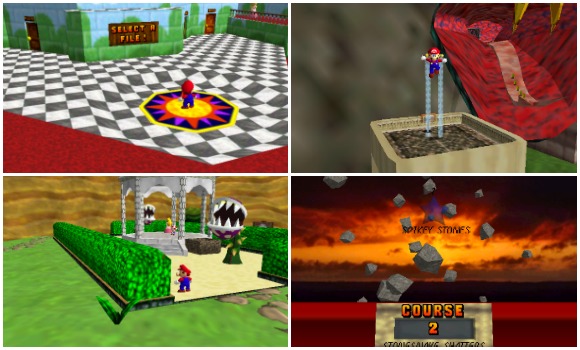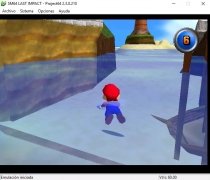
Sometimes, Mario has even interacted with his baby self, especially in Mario & Luigi: Partners in Time. Although his history does not follow an established canon, some of Mario's earliest games chronologically are in the Yoshi's Island series, depicting Mario's birth as part of a twin delivery, with Luigi, by a stork. Promotional image celebrating Mario's history in the mainline platformersĭue to being a recurring major protagonist of a long-running video game series, Mario has extensive history spanning decades. He stated, "I like the idea of a middle-aged ordinary man doing something nice for other people." subsequently changed his occupation to a plumber because "the scenario dictates his role." Miyamoto in a 2009 radio interview stated that he wanted to create a hero resembling an "ordinary odd-job man" he did not like the idea of a perfect hero, preferring the idea of "ordinary citizens doing something really good for society," and would be "embarrassed" for making a perfect hero. While Mario was initially described as a carpenter, Mario Bros. Prior to this, the Japanese instructions for the Game & Watch version of Donkey Kong called him Kyūjo Man (救助マン, lit. In Japan, he became known as Mario with the release of Donkey Kong Jr. It was too late to replace the Jumpman name from the instructions, but the "Mario" name appeared on the flyer Media:DK English Flyer.jpg that debuted alongside the game. President Minoru Arakawa and warehouse manager Don James thought it would be funny to call the character Mario after the reclusive Italian American landlord of storage and company housing, Mario Segale. In the American arcade instructions, he was called Jumpman, but Nintendo of Japan asked Nintendo of America if it wanted to rename him during the Western localization.

When the game was released in Japan, he was simply a nameless "player" (プレイヤー) in the Japanese arcade instructions and flyer. This character was given red overalls and a blue shirt in order to make the arms more visible as well as a cap and mustache, as hair and a mouth were impossible to animate on the arcade system. Coincidentally, "Ossan" would be the name given to a Mario look-alike in the game Golf. įor use in his arcade game Donkey Kong, Miyamoto created a player character originally known during development as Ossan (the Japanese term for "middle-aged man"), then Mr. This was abandoned due to technical reasons, so he decided to come up with a new idea using his own characters. Miyamoto conceived the concept of a love triangle and decided to make a game based on Popeye. In most games, he is the hero that goes on an adventure to save Princess Peach from his arch-nemesis, Bowser, but he has been shown doing many other activities besides adventuring, such as racing and sporting with his younger twin brother, Luigi his friends such as Yoshi and Toad and others.įollowing the failure of Radar Scope in North America, Nintendo's then-president, Hiroshi Yamauchi, requested Miyamoto's aid in converting unsold Radar Scope units into something that would sell well. According to Nintendo's philosophy, this allows Mario to fit in many different genres and roles. Games have usually portrayed Mario as a silent, straightforward character. Since Super Mario Bros., his trademark abilities have been his jumping and stomping powers, with which he defeats most of his enemies, and his ability to gain even more powers with a plethora of items, such as the Super Mushroom, the Fire Flower, and the Super Star. Mario made his first appearance as the protagonist of the arcade game Donkey Kong, released in 1981 (in which he took the alias " Jumpman"). He was created by Japanese video game designer Shigeru Miyamoto and serves as the main mascot of Nintendo.

Mario is the main character and titular protagonist of the long-running and highly successful video game franchise of the same name. “It's-a me, Mario!” - Mario, Super Mario 64 MarioĪrtwork of Mario from Mario Party Superstars For the Donkey Kong minigame from Mario Party 7, see Jump, Man.


For information about the badge of the same name, see Jumpman (badge).


 0 kommentar(er)
0 kommentar(er)
